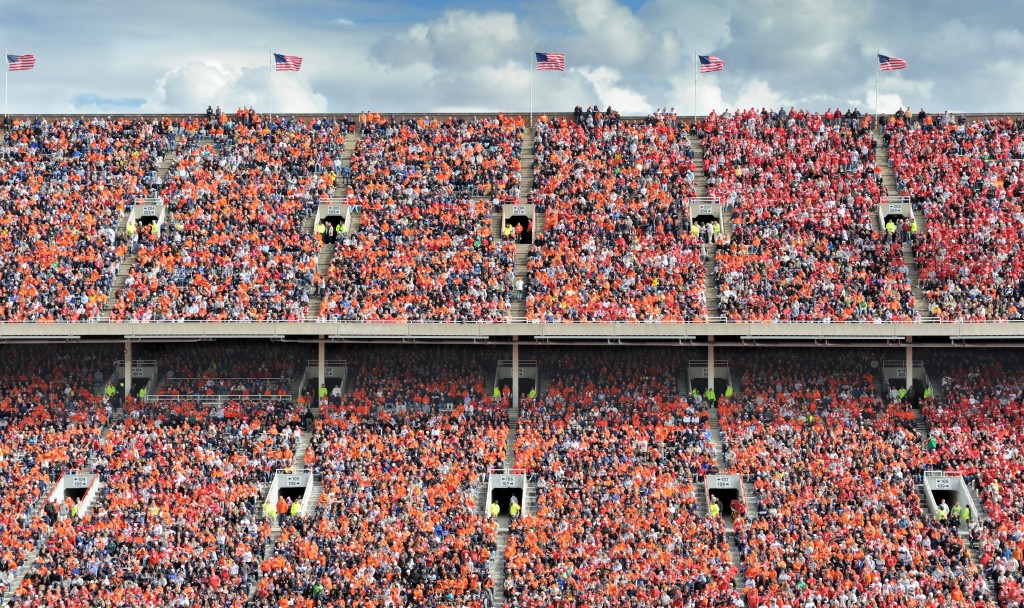Sports fans and concert-goers alike long for the day when physical events become a part of “normal” life. But if COVID-19 has proven anything, it is that it has changed how we all live for good. When visitors return to stadiums, the unfortunate truth is that they will be greeted with a much different experience than what used to be the norm.
Vaccinations are increasing hope that the days of loud, populated stadiums are going to come back soon. However, safety will remain at the top of visitors’ minds moving forward. Organizations must respond to continued concerns by making huge changes to sanitation and hygiene guidelines.
Necessary Changes for Hygiene

The primary burden of developing new sanitation procedures is to ensure every person’s safety in the stadium. These are among the biggest priorities in opening the post-pandemic stadium with hygiene in mind.
Increased, Defined Spaces
Physical distancing will not become a thing of the past once restrictions ease. Stadium entrances, exits, and hallways will have defined barriers to control foot traffic. These new rules will be confusing for many, so along with these should come signs that instruct people on where to stand and which side of the area to walk.
Restrooms also need high toilet partitions that reach from ceiling to floor to reduce airflow between stalls. Combining these with good ventilation and windows will be safer. Restroom occupancy should also be limited to a few people at a time to prevent congestion.
Contact-less Technology
To minimize the unnecessary transfer of germs among stadium goers, contact-less technologies must be maximized at every point. Businesses should prepare to set up digital ticketing services in time for visitors finally coming back to watch events in person.
Food stalls need to have cashless payment options and pick-up counters for meals. Quicker service is also a must to keep people from loitering around, so expect pre-prepared food sets to increase service speed.
Restrooms also need to have motion-activated faucets and soap and sanitizer dispensers. It is advisable to opt for paper towels instead of hand dryers, as studies have found that air hand dryers spread germs around the room rather than getting rid of them.
More Frequent Maintenance
Maintenance is a regular practice for any place that follows proper sanitary procedures, even before the pandemic. After it, however, more frequent checks have to be done to maintain the cleanliness of various areas in the stadium. It will mean making sure that all disinfection areas are well-stocked with sanitizers and other materials and regularly wiping down seats and other frequently touched spaces.
The Visitor Experience After These Changes
Stricter sanitary protocols will transform the experience of every stadium goer. Here are a couple of ways we can expect experiences to be affected when stadiums reopen to the public.
Longer Queues and Longer Waiting Times
Long lines for stadium events were already troubling back then. Unfortunately, it is safe to say that waiting times will grow longer due to security checks, temperature checks, and digital ticket verification, a new practice that both visitors and crew will take a bit of time to get accustomed to.
Knowing these, event organizers must make it a point to remind attendees to leave a generous time allowance for when they drive or commute to the venue. Be transparent about the possibility that queuing may take quite a bit of time for everyone due to safety and sanitation protocols.
Mandatory Use of Personal Protective Equipment
The Centers for Disease Control and Prevention recommends that people still wear masks in public places even after vaccination as a safety precaution. Organizers should then still require PPE for event-goers even after the pandemic.
There may be exceptions for this, of course, such as when people are eating meals. As standard practice, however, masks will remain a regular part of people’s lives for safety and courtesy.
Decreased Stadium Capacity (For Now)
Events may be coming back once restrictions are lifted after the pandemic, but it will yet be quite a bit of time before we see fully occupied stadiums again. Physical distancing practices will mean skipping seats during events, drastically reducing the number of people who can be at the venue at one time.
Many details remain a big question mark as the world slowly finds its way to life after the pandemic. What businesses can do is keep safety and sanitation at the top of their priorities, especially in public spaces.

